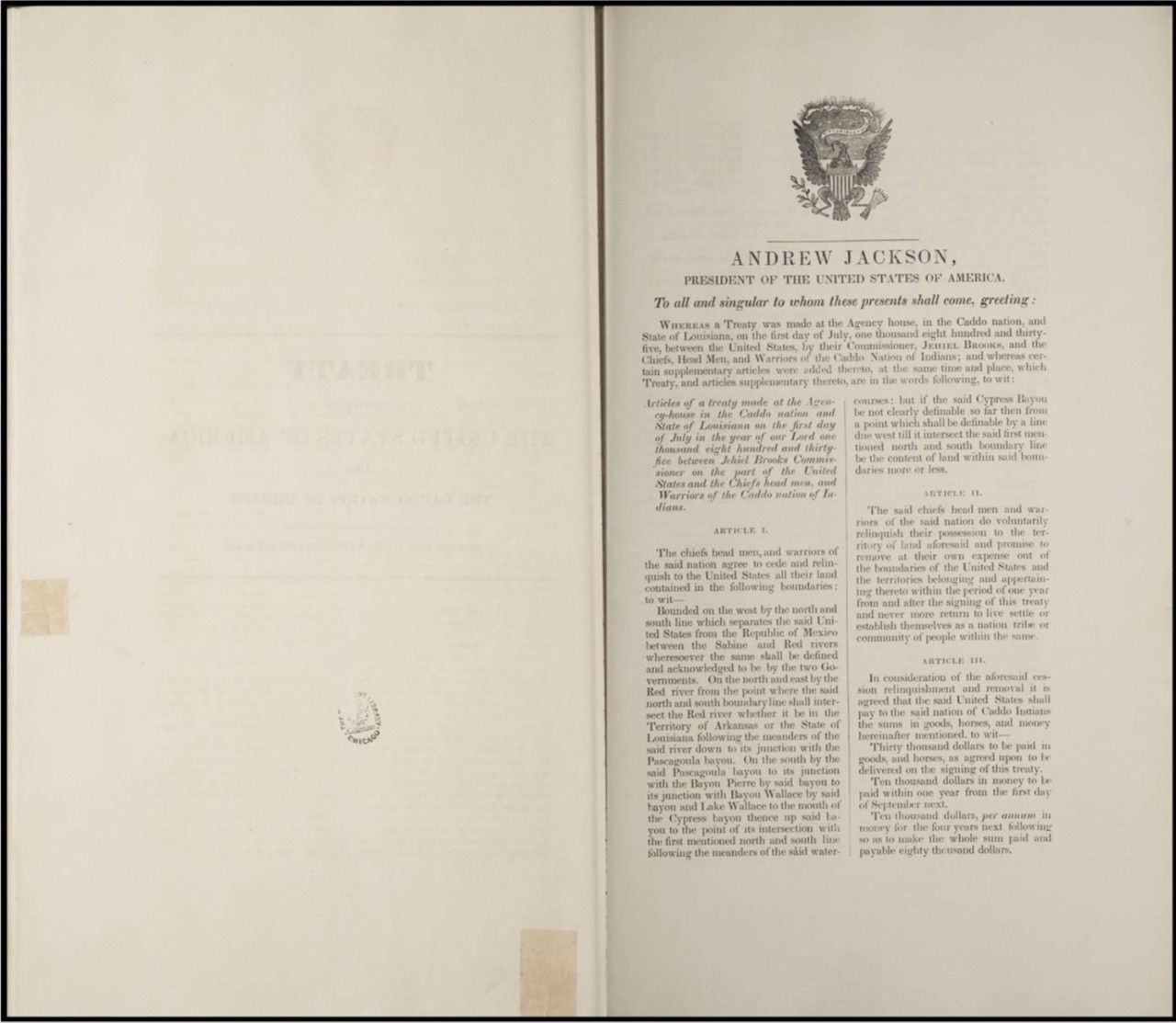Caddo Nation
By Jericka Handie

Some experiences are hard to shake when all seems lost.
Tamara Francis, chairwoman of the Caddo nation, said the United States’ past decisions have shaped the tribe’s present and will potentially affect its future.
“The Caddo were an extremely large tribe,” Francis said. “What you know as Caddo today is not what Caddo used to be.”
According to historical documents, the early Caddo lived on the Red River and East Texas in small, rural communities along rivers and streams. What would become one of the most sought-after lands, the Red River Valley, was inhabited by Caddo people about 2,500 years ago.
By the 17th century, the Caddo had established permanent villages in territories including southwestern Arkansas, northwestern Louisiana, northeastern Texas and southeastern Oklahoma.
They built mounds and maintained central places of worship throughout their villages and ceremonial centers.
By 1800, the Caddo dominated the regional economy in the Red River Valley through trading with early European settlers. However, when the United States purchased Louisiana in 1803 and gained control over the port of Orleans and the Mississippi River, the Caddo found themselves without power or agency with the U.S. government.
In 1835, a treaty was signed by then-United States commissioner Jehiel Brooks and the chiefs, head men and warriors of the Caddo Nation of Indians. The Caddo were forced to cede their traditional territory.
In previous years the Caddo had built alliances with Spain and France by participating in the French fur trade and exchanging guns, horses and other items. Most Caddo settled along the rich Red River Valley, and as time passed Americans realized the agricultural potential of their inhabited lands and trade was put on the back burner.
The Louisiana Purchase was the impetus for the relocation of the Caddo. When the United States purchased the Louisiana Territory from France, the Caddo were forced out of their original lands on the lower Red River.
Louisiana Caddo moved southwest to join other tribal members in Texas. They lived there until they received threats from an anti-Indian group, which forced them to flee to east-central Oklahoma.
“It was not possible for bands of us to stay behind because it was that much of a thorough removal,” Francis said. “Anyone that tried to stay probably got killed.”
Francis said only 150 to 200 tribal members made it to Oklahoma.
When they arrived, conditions were poor. The goods, horses and money they were promised were never delivered.
Modern Caddo perspective on the forced land cession:
With the removal from Louisiana, better yet removal from the United States, the government did not want us living in the US. It truly was a “I don’t care where you go, you just can’t stay here.” The treaty was careful to ensure that the government did not allot any land for those Caddo forced out of Shreveport and the United States. Ancestor Mary Inkanish documented her experience of being removed from Shreveport in a 1927 interview. She explained that when that treaty was signed, her family went down into Mexico. This demonstrated the familiarity Caddos had with Mexico. Why would they go into Mexico first if they didn’t know what to expect? This linked the El Camino Real de los Tejas as the main road used to get there. Caddo Nation, 201
The Caddo, who Francis’ mother often refers to as “the most ancient of people,” are now a community of 6,300 enrolled members spread across all 50 states.
In July 2016, Francis was re-elected as chairman of the Caddo Nation. Her mother, Mary Pat Francis, was the first elected female chairman of the Caddo.
Francis said years of forced assimilation in boarding schools heavily affected the Caddo. Poverty, drug abuse and suicide have come of it, she said.
Regardless of all barriers, Francis said she is working to counteract centuries of federal policies that have put her people at a disadvantage. Whether its rent assistance, paying for school supplies or issues at home, Francis wants to help.
“As far as my leadership, anyone that comes to the tribe, it doesn't matter what political faction they are or their background, if they need services, they get services and I make sure of that,” Francis said.
Over time, the Caddo Nation has maintained cultural practices such as unique songs and dances, material culture and language.
Located at the tribal nation headquarters near Binger, the Caddo Heritage Museum houses a vast collection of prehistoric, historical and archival artifacts, photographs, books and contemporary art.
Jericka Handie is a reporter with Gaylord News, a reporting project at the University of Oklahoma Gaylord College of Journalism and Mass Communication.


